The Establishment Has Already Acknowledged a Lost Race of Giants - Part 2
Following our overview of discoveries of gigantic humanoid skeletons in the burial mounds and associated graveyards of the Adena-Hopewell, Archaic Cultures, and Southeastern Ceremonial Complex, we will now document the discovery of the Unique Physical Types (UPT) even after the institution of the mainstream policy of denial, or “post cover-up”.
The two pre-eminent Adena scholars of the twentieth century were William S Webb (assisted by Charles Snow of the University of Kentucky) and Don Dragoo, of the Carnegie Museum. When Webb excavated the Dover Mound in Mason Co, Kentucky, he encountered a group burial of 4 skeletons, one of which represented the Unique Physical Type:
“The remains of burial 40 is one of the largest known to Adena; the skull-foot field measurement is 84 inches (7 feet).” (The Dover Mound, William S Webb and Charles Snow 1959)
The Burial Census Table mentions that this skeleton had a “very thick” skull and represented the “tallest Adena male” from the mound. For other burials in the Dover Mound the Table includes such details as “prominent bilateral chin”, “rugged head and face, wide bilateral chin” and “High Vaulted, large-faced”. (Webb and Snow, 1959)
The Dover Mound also yielded skeletons with dental abnormalities. Burial 54 included “a supernumerary tooth with twin cusps, lying diagonally in the left maxilla”, as well as “shovel shaped later incisors.” (Webb and Snow, 1959)
Recently recorded instances of Adena supernumerary teeth occur at McMurrey Mound 1 and Sidner Mound 1 in Ohio. (Mortuary Variability in the Middle Big Darby Drainage of Central Ohio Between 300 BC and 300 AD Volume 1, Bruce Aument). One particularly monstrous deformation analyzed and photographed in the Ohio Archaeologist may be an extreme case of the type of dental anomalies found in the Dover Mound. (Ohio Archaeologist, 10(4), Oct 1960.)
- An Exploration into the Existence of Giants in the Georgian Caucusus
- Have explorers in Ecuador found ‘Lost City of Giants'?
- The Mysteries of the Coddu Vecchiu Tombs of Giants
Webb and Snow also noted the large crania of the Adena, which they partly attributed to head-boarding:
“Not only do the Dover people show the results of head shaping (deformation), but they exceed the total Kentucky series in the great width and height of the skull vault!...it is to be noted that the head shaping…has been extreme in these skulls…These people as a group…have the highest skull vaults reported anywhere in the world.” (Webb and Snow, 1959)
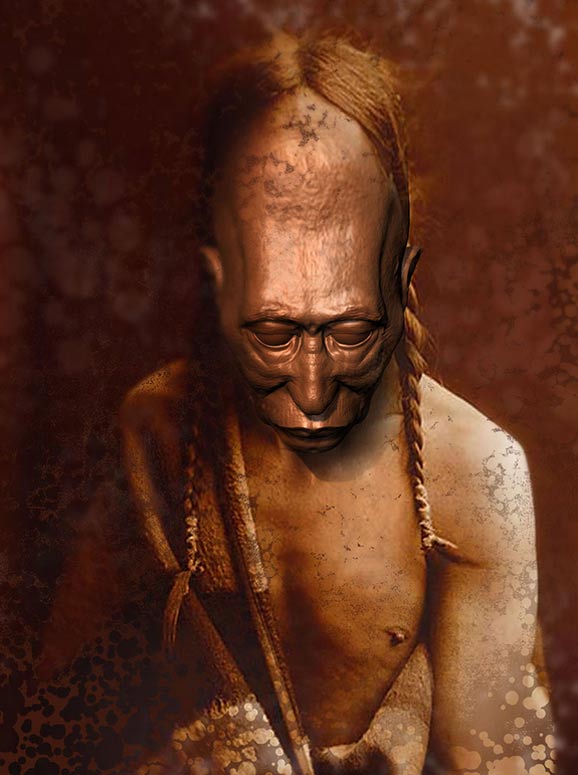
Artist’s reconstruction of the high skull vaults reported in descriptions of North American giants. Image courtesy of Marcia K. Moore, Ciamar Studio.
Another feature of the UPTs documented by Webb and Snow is the massive lower jaw:
“One of the outstanding and un-Indian traits present among the Adena people is their prominent and often bilateral chins…One of the skulls from the Dover Mound, Burial 25…represents a bilateral chin with a width of 52 mm.” (Webb and Snow, 1959)
“One of the particular features present in at least one-half of the observed examples is the great width of the bony chin, formed by bilateral eminences rarely found among the skulls of the much earlier Shell Heap People or among the later Hopewell People.” (The Adena People, No 2, by Webb and Baby).
Besides the large skeletal type, Snow noted the discovery of the “Dwarf” type mentioned in early literature in his observations of the famous Adena pipe from Ross County, Ohio:
“Further evidence of abnormal Adena individuals is portrayed in a remarkable piece of sculpture in the round-the Adena Pipe figurine…The figure depicted is typical of this form of dwarfism.” (The Adena People, No 2, by Webb and Baby.)
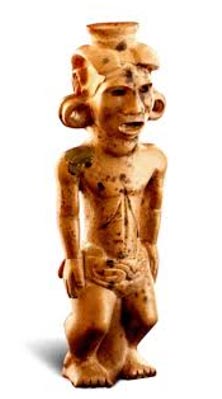
The Adena Pipe. His head and torso are large in comparison to his legs, suggesting to some that he represents a dwarf. (Photo courtesy of the Ohio Historical Society)
The text references the excavation of one of these individuals at Waverly, Ohio. The following description of this burial is from Gerald Fowke:
“…a skeleton of peculiar form. It was not over five feet long, but the bones were very thick and the processes for attachment of muscles were extraordinary in their development. The skull was nearly half an inch thick and of unusual size, mostly back of the ears, though the forehead was full and high. The teeth were large, hard, and but little worn”. (The Archaeological History of Ohio, by Gerald Fowke, page 372.)
In 1958, Don Dragoo encountered the large Adena type while excavating the Cresap Mound in West Virginia on behalf of the Carnegie Museum. In a subfloor tomb he unearthed Burial 54:
“This individual was of large proportions. When measured in the tomb his length was approximately 7.04 feet. All the long bones were heavy and possessed marked eminences for the attachment of muscles.” (Mounds for the Dead, by Don Dragoo, 1963).

A burial mound of the Adena Culture. Grave Creek Mound in Moundsville, West Virginia (Wikimedia Commons)
This discovery, as well as a review of Webb’s earlier work at the Dover Mound, influenced Dragoo’s remarkable observations on Adena anthropology:
“Two outstanding traits have been noted repeatedly for this group. One is the protruding and massive chin often with prominent bilateral protrusions. The second trait is the large size of many of the males and some of the females. A male of six feet was common and some individuals approaching seven feet in height have been found, for example, Burial 40 in the Dover Mound and Burial 54 in the Cresap Mound. Some of the females in the Dover Mound also were more than six feet in height. Not only were these Adena people tall but also the massiveness of the bones indicates powerfully built individuals. The head was generally big with a large cranial capacity”. (Mounds for the Dead, by Don Dragoo, 1963).
To Webb, Snow, and Dragoo, the evidence clearly pointed towards the existence of a group of genetically related elites within the Adena sphere who shared the UPT traits. The true number of these individuals had been obfuscated by the common practice of cremation:
“If, as the evidence seems to indicate, the burials in the tombs were those of a selected group such factors would have undoubtedly been of importance not only in the development of the prominent chin but also in the large stature. If only certain inbreeding individuals of the total population were members of the ‘selected group’, genetic factors would also have played an important part in the establishment of the unique Adena physical type…How wide-spread throughout the entire Adena population were the unique traits of the tomb burials is unknown but Snow’s study of the cremated remains from the Dover Mound indicated that at least some of the individuals among these cremated remains also possessed the unique traits of the flesh burials in the tombs. Because of the common practice of cremating most of the dead, we will probably never be able to determine the full extent of these special traits in the general population.” (Mounds for the Dead, by Don Dragoo, 1963).
The emerging picture is of an elite race within Late Archaic/Early Woodland societies who were often buried in the mounds, and who represented a type of “royalty”. Among these interrelated groups were UPTs. This elitism is further evidenced by the presence of extensive child and infant burials in the tombs, often accompanied by the same exotic goods as the adults including shell beads and copper rings. Also, dental and bone anomalies have been used to establish a genetic connection between individuals at mound sites.
Gigantic discoveries are often challenged with the generic statement that average Adena were between 5’6’’ and 5’11’’ feet tall, but this argument is a conjecture of half-truth disguised as science. We are not concerned with the “average” stature of the Adena populace, but rather the irregular characteristics (and often abnormally tall stature) of their elite.
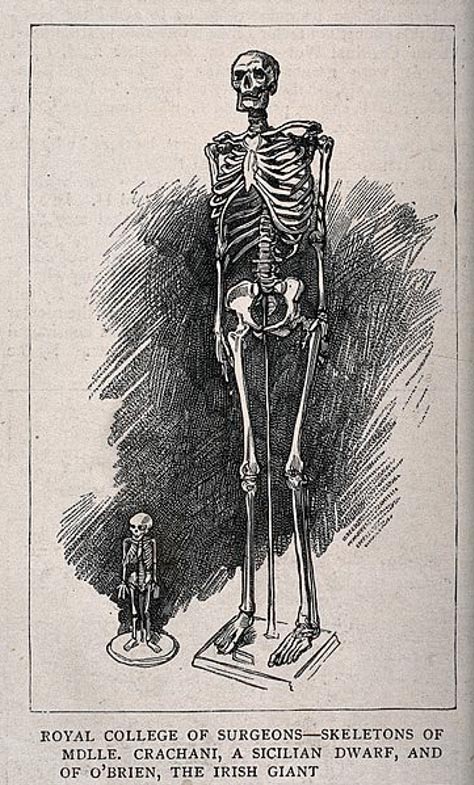
Skeletons of a male giant and a female dwarf, displayed at the Royal College of Surgeons. (Wikimedia Commons)
Besides the professional literature, so-called “amateur” archaeologists have also chronicled conclusive evidence of Unique Physical Types with a great consistency to the discoveries of Dragoo and Webb. In 1908, Louis Welles Murray recorded that at Tioga Point in Pennsylvania, remains of “a skeleton of a man six or more feet in height” beneath a cist-like grave were found. The grave itself was encased and moved to the local museum where the bones were studied by hundreds of people. Other skeletons from this same area “were of unusual size; one, judged from the length of thigh bone, to be seven feet.” (A History of Old Tioga Point and Early Athens, Pennsylvania, by Louis Welles Murray.)
In addition to these, Murray documents the examination of a large skeleton by a Professor Holbrooke:
“Judging by the thigh bone he must have been seven feet tall. The skull was much larger than usual, very thick, the forehead unusually receding, the top flattened. The jaws were extremely strong, full of large, perfect teeth.” (A History of Old Tioga Point and Early Athens, Pennsylvania, by Louis Welles Murray.)
Following the discovery of burials in her own flower garden, Murray embarked on an archaeological odyssey of her own. In 1921, she published an article for the American Anthropologist, noting that the femur, jaw, and teeth of one of the seven-foot skeletons was then still in the Tioga Point Museum. Also included are references to many skeletons between 6 and 7 feet tall, with photographs of artifacts, pottery, and the in situ burial of one of the “above 6ft” burials. The article also features a photograph of the “Paul Scott Collection”, described as “a multiplicity of small artifacts, suggesting a race of pygmies” which included a “miniature amulet and sinker stones.” (Aboriginal Sites In And Near “Teaoga”, in American Anthropologist 23(2) 1921).
Regardless of the disparagement of amateurs, historians, and antiquarians, the credentials of Webb, Snow, and Dragoo have never been brought into question. With so many researchers scrambling today to discover irrefutable evidence of gigantic or otherwise anomalous beings to prove their existence, the authors question why they do not simply present the works of William S Webb and Don Dragoo to anthropologists, and more importantly, their audiences.
While the concept of a mysterious and undiscovered race may create an air of sensationalism healthy for selling books and DVDs, we feel that it is of far more relevance to demonstrate that the Unique Physical Types were discovered by professionals all the way up through the 20th century, even after the institutionalized policy of denial, and yet the establishment continues to deny their own documented evidence and the truth.
Featured image: Illustration from "Mundus subterraneus" - suggesting that fossil bones were from giants (Wikimedia Commons).
By Jason Jarrell and Sarah Farmer
References:
The Dover Mound, William S Webb and Charles Snow 1959. The measurement of the giant is on page 22, the burial census is on pages 29-32, and the dental anomalies are photographed on page 43.
Mortuary Variability in the Middle Big Darby Drainage of Central Ohio Between 300 BC and 300 AD Volume 1, Bruce Aument.
Ohio Archaeologist, 10 (4), Oct 1960. Article and photograph on pages 140-141.
The Adena People, No 2, by Webb and Baby.
The Archaeological History of Ohio, by Gerald Fowke, page 372.
Mounds for the Dead, by Don Dragoo (1963). Burial 54 is measured and described on page 67, and an actual photograph of the skeleton in situ appears on page 50.
A History of Old Tioga Point and Early Athens, Pennsylvania, by Louis Welles Murray. Large Skeletons appear in the text around page 200. Page 203 features a photo of a large type in situ.
https://archive.org/stream/ahistoryoldtiog00murrgoog#page/n8/mode/2up
Aboriginal Sites In And Near “Teaoga”, Now Athens, Pennsylvania, in American Anthropologist 23(2) 1921 page 183. The article features a photo of the “pygmy artifacts”.



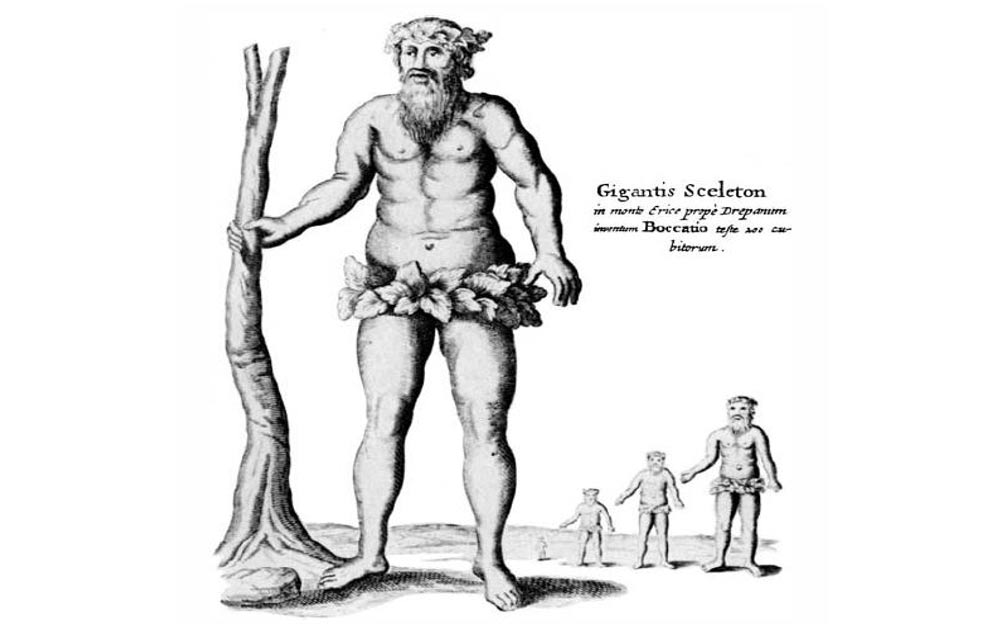
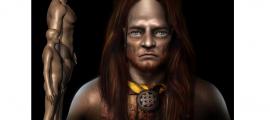
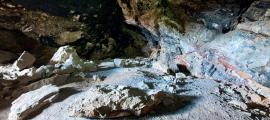
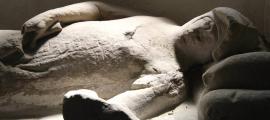
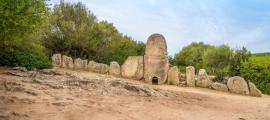

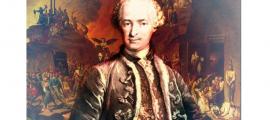
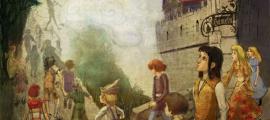

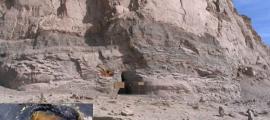
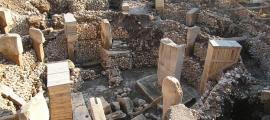

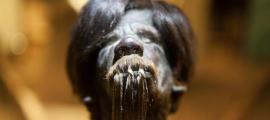
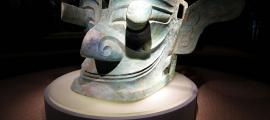

Comments
the Nephilim, children on the fallen angels. The elongated skulls makes them look alien, in human body. The Paracas elongated skull, came back with results that had unknown mtDNA, I wonder if these skulls would be the same.
These anomalies are most definitely a product of a disorder altering the production of growth hormone, or somatotrophic hormone.
I believe this is clear, as hypersecretion leads to Gigantism even in children. In adults it causes a condition known as Acromegaly, which results in enlarged hands, jawbone and brows, just as is described of these giants throughout these two articles. This disorder arises from the anterior lobe of the pituitary gland beneath the hypothalamus in the brain.
It is an absolutely fascinating topic and it is a shame that scientist so often refuse to remain impartial. This closed mindedness only results in a loss of knowledge for mankind.
Yes acromegaly comes to mind. And moreover, 7 foot tall without hormonal disturbance is not that rare. Peter the Great , of Russia was over 6'7'' and well built.
Tall men have always produced a great charismatic impression over normal sized people. Just look at average size of political leaders. Of course there are exceptions.
I have read parts 1 and 2, all of it. There is whining about a cover-up of this information- but it was freely available: you just had to ask!!
Second, as there are nowhere here noted individuals above 7 feet in height, and as there are several tribes where such heights are the norm, why the fuss?
People habitually grow big and strong if there diets are good and they exercise enough. You might like to examine records of average heights among those born in the UK during and after WW2. when bread sugar and meat were rationed. Meat was rationed in the UK until 1954. Etcetera.Diet affects height, as well as girth!!
Idees Di
Register to become part of our active community, get updates, receive a monthly newsletter, and enjoy the benefits and rewards of our member point system OR just post your comment below as a Guest.